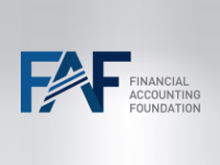Accounting
Review Assesses Implementation of GASB Capital Asset Impairment Standard
An accounting standard for state and local governments that addresses the impairment of capital assets and insurance recoveries provides important information to users of financial statements and resolves some but not all of the issues underlying its purpose.
Aug. 20, 2014

An accounting standard for state and local governments that addresses the impairment of capital assets and insurance recoveries provides important information to users of financial statements and resolves some but not all of the issues underlying its purpose. That is a central conclusion of the Post-Implementation Review (PIR) of Governmental Accounting Standards Board (GASB) Statement No. 42, Accounting and Financial Reporting for Impairment of Capital Assets and for Insurance Recoveries.
Issued in 2003, GASB Statement 42 establishes measurement guidance for capital asset impairments and requires governments to report the effects of those impairments when they occur, rather than as a part of the ongoing depreciation expense for the capital asset or upon disposal of the capital asset. It also provides uniform reporting guidance for insurance recoveries of state and local governments.
“The recent PIR Report has provided some important stakeholder feedback on the benefits of and the cost associated with the requirements of Statement 42 in light of actual experience,” said GASB Chair David A. Vaudt. “On behalf of the GASB, I would like to thank the Foundation for undertaking this important process and all of the individuals and organizations who gave their time to share their insights and experiences with the PIR staff.”
The PIR team received broad-based input from GASB stakeholders including auditors and preparers, and more limited input from financial statement users and academics. Based on its research, the review team concluded:
- Statement 42 resolved some of the issues underlying its stated need but may not have completely resolved all of them.
- In particular, users have mixed views as to whether Statement 42 achieved the two objectives for capital asset impairments: establishing recognition criteria for impairments, and requirements that appropriately measure the effects of impairments.
- For insurance recoveries, Statement 42 achieves the objective of establishing and clarifying guidance for accounting for insurance recoveries for all funds and activities.
- The capital asset impairment and insurance recovery information governments provide in their financial statements is important to users of financial statements. However, that information may be difficult for some users to understand and may not be as detailed or as comparable across governments as some users may wish.
- Most of Statement 42’s requirements are operational but some stakeholders find certain aspects challenging. The primary operational concern, which was voiced by practitioners in particular, relates to the service utility approach and related techniques for measuring impairment of capital assets.
- Statement 42 did not result in significant changes to financial reporting and operating practices, nor did it result in significant unanticipated consequences.
- The cost to implement Statement 42 and the continuing application costs generally are consistent with the costs that stakeholders expected.
- Statement 42’s expected benefits of improved user understanding for when capital asset impairments have occurred and enhanced comparability for insurance recovery information have been achieved. However, the expected benefit of improved user understanding of capital asset impairments’ financial impact on governments may not have been achieved to the extent expected.
With regard to standard-setting process recommendations as a result of the review, the PIR team recommended that the GASB conduct, at a minimum, a limited field test when proposing to issue a standard with new recognition or measurement approaches, and share the results with users to assess the usefulness of the resulting information.
The review of Statement 42 was undertaken by an independent team of the Financial Accounting Foundation (FAF), the parent organization of the GASB and the Financial Accounting Standards Board (FASB). The team’s formal report is available here. The GASB’s response letter to the report is available here.
With the completion of the review of GASB Statement 42, the PIR team will initiate its review of GASB Statements No. 33, Accounting and Financial Reporting for Nonexchange Transactions, and No. 36, Recipient Reporting for Certain Shared Nonexchange Revenues, later this year.
